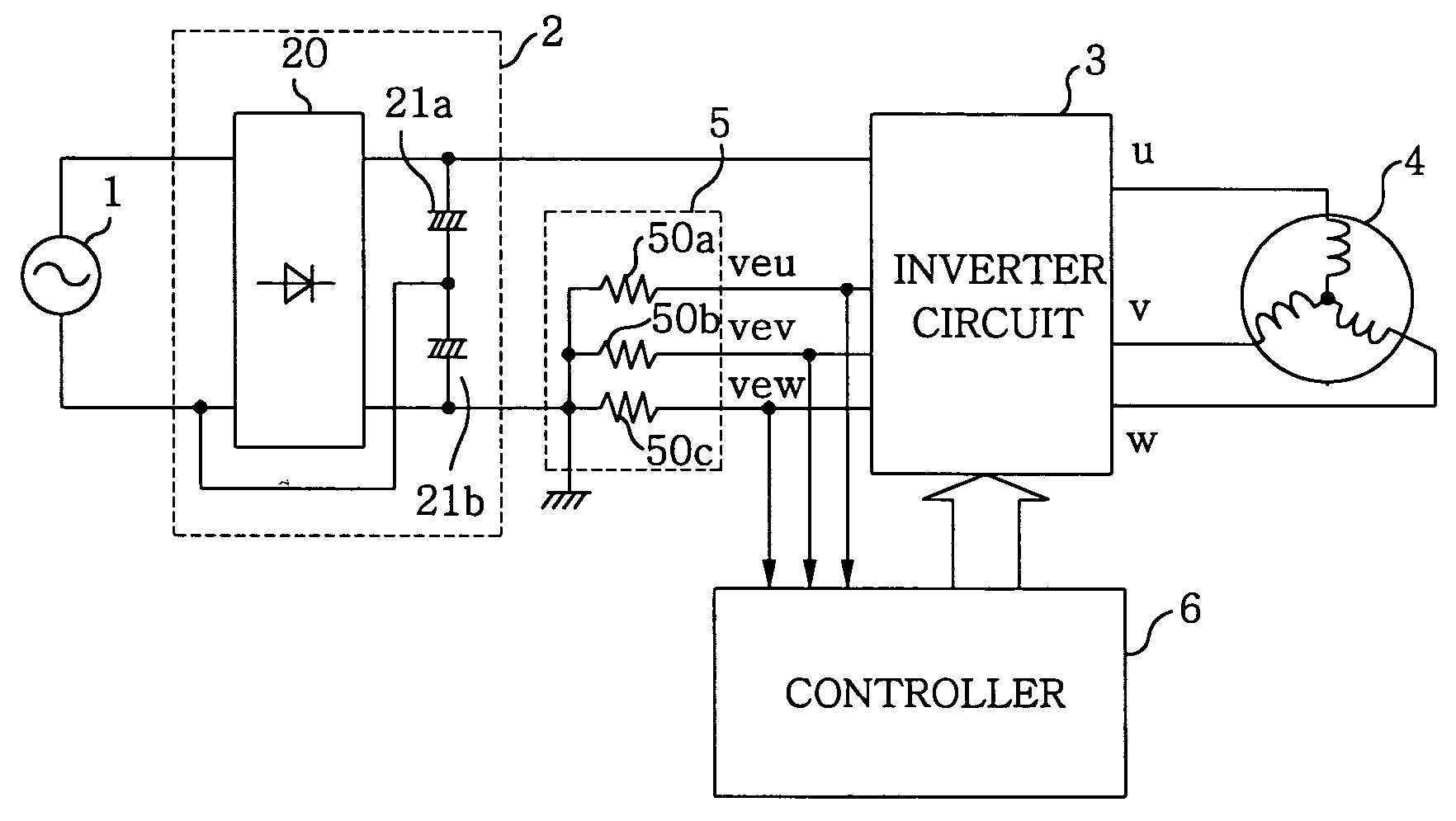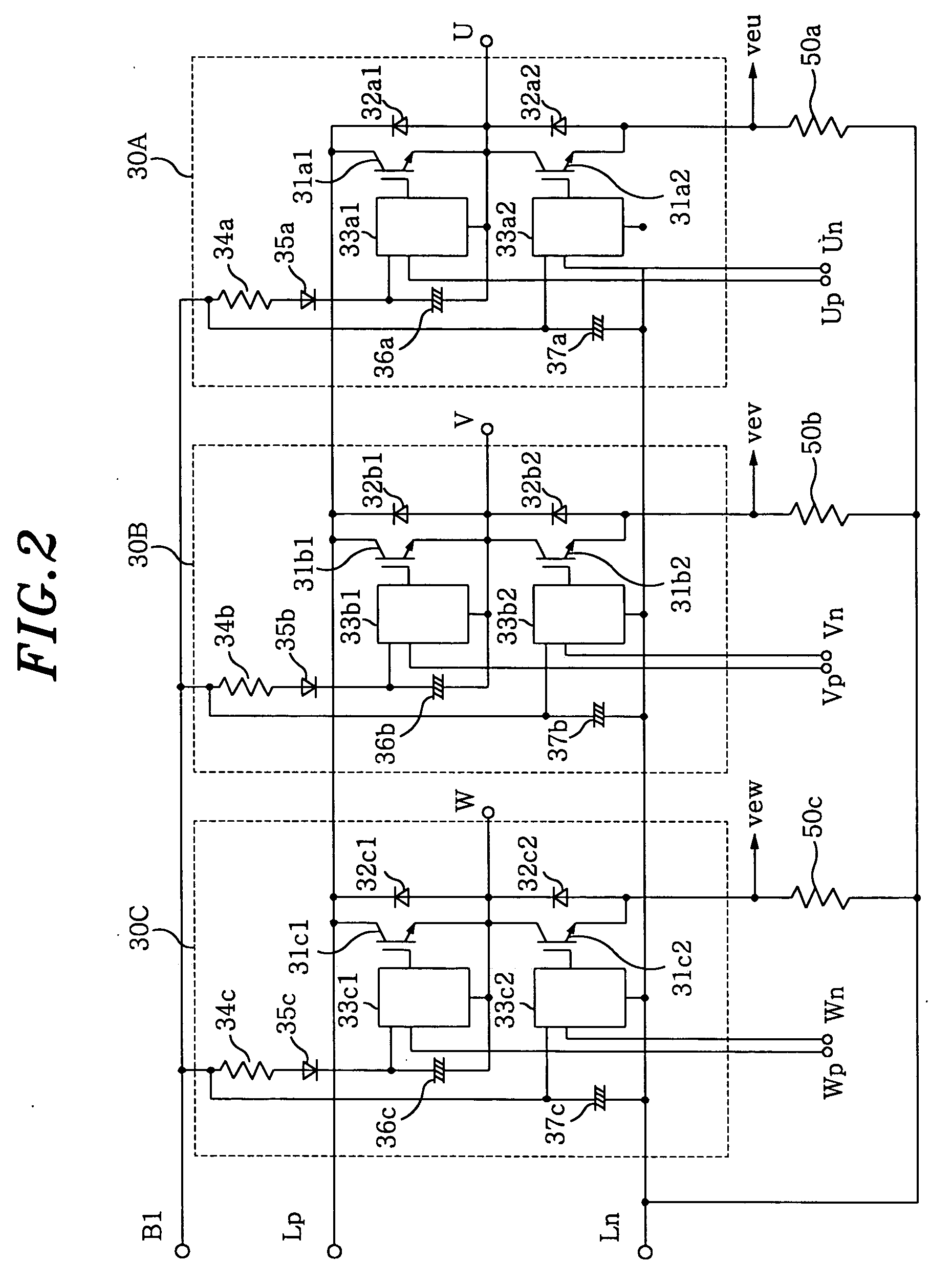Motor driving apparatus for use in a diswasher
a technology for driving apparatus and diswasher, which is applied in the direction of motor/generator/converter stopper, electronic commutator, dynamo-electric converter control, etc., can solve the problems of increasing the thickness and the price of the motor, increasing the noise of the motor, and deteriorating the reliability, so as to improve the detection efficiency and reduce the size of the dc component. , the effect of small siz
- Summary
- Abstract
- Description
- Claims
- Application Information
AI Technical Summary
Benefits of technology
Problems solved by technology
Method used
Image
Examples
second preferred embodiment
[0057]FIG. 8 is a flow chart of a motor control program that describes the operation of the motor driving apparatus for use in the dishwasher in accordance with the present invention.
[0058] A motor driving program is started in step 100, and setting of various parameters, e.g., a driving frequency, a ratio of V / f, and a reactive current is performed in step 101. Then, it is determined whether a motor's operation is a start-up operation in step 102, and, if so, a start-up control subroutine is executed in step 103.
[0059] The start-up control subroutine 103 is for linearly increasing driving frequency f from 0 to set frequency fs. Depending on driving frequency f, a V / f control and a setting value for reactive current Irs are varied. As for a pump load, the load torque is changed by the square of the rotation speed. Thus, a stable driving control can be performed by obtaining torque current Iq corresponding to a rotation speed, calculating I sin φ and performing a driving control wi...
PUM
 Login to View More
Login to View More Abstract
Description
Claims
Application Information
 Login to View More
Login to View More - R&D
- Intellectual Property
- Life Sciences
- Materials
- Tech Scout
- Unparalleled Data Quality
- Higher Quality Content
- 60% Fewer Hallucinations
Browse by: Latest US Patents, China's latest patents, Technical Efficacy Thesaurus, Application Domain, Technology Topic, Popular Technical Reports.
© 2025 PatSnap. All rights reserved.Legal|Privacy policy|Modern Slavery Act Transparency Statement|Sitemap|About US| Contact US: help@patsnap.com



